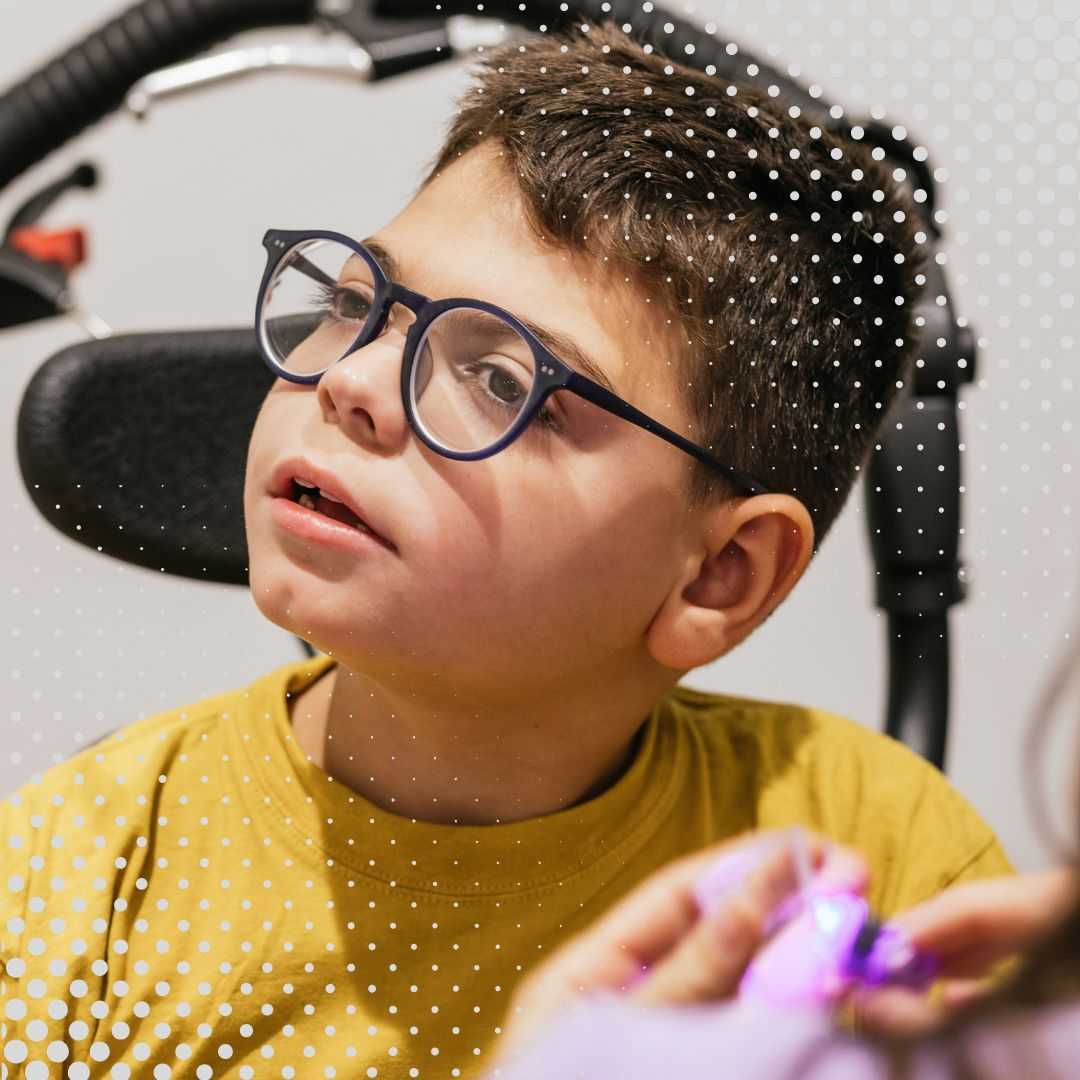Understanding How Stem Cells May Repair Neurological Disorders
The human brain and nervous system are incredibly complex, and when neurological disorders like Parkinson's disease, Alzheimer's, multiple sclerosis, or spinal cord injuries strike, they often involve the degeneration or damage of nerve cells. This leads to a profound loss of function that conventional treatments struggle to reverse, significantly impacting a person's quality of life. In this challenging landscape, the field of stem cell therapy emerges as a powerful beacon of hope, investigating whether these remarkable cells can truly repair what was once thought irreparable.
For years, regenerating damaged brain or nerve tissue seemed like science fiction. However, advancements in regenerative medicine, particularly with stem cell treatment, are transforming this perception. Researchers worldwide are actively exploring how these unique cells, with their inherent ability to differentiate into various cell types and secrete beneficial growth factors, might restore lost neurological function. Understanding the current status, immense potential, and inherent challenges of using stem cells to repair neurological disorders is crucial for anyone seeking answers about this cutting-edge approach to healing the nervous system.
Can stem cells repair neurological disorders?
The ability of stem cells to repair neurological disorders is a rapidly evolving area of research. These unique cells possess two key properties: self-renewal, meaning they can divide and make more stem cells, and differentiation, meaning they can develop into specialized cells like neurons or glial cells. In the context of neurological damage, this differentiation potential suggests a way to replace cells lost due to disease or injury.
Beyond simply replacing damaged cells, stem cell treatment also works through other mechanisms. Stem cells can release neurotrophic factors that promote the survival and growth of existing neurons. They can also modulate the immune system, reducing inflammation that often worsens neurological damage. This multi-faceted approach makes stem cell therapy a promising candidate for tackling complex conditions that affect the brain and spinal cord, although most applications are still under investigation in clinical trials.
What types of neurological disorders can stem cells potentially treat?
The versatility of stem cells makes them a subject of intense research across a broad spectrum of neurological disorders. These conditions often involve common underlying problems, such as cell death, inflammation, or demyelination (loss of nerve insulation), all of which stem cells could potentially address. The specific mechanisms vary depending on the disease and the type of stem cell used.
Key neurological conditions where stem cell research is most active include Parkinson's Disease (replacing dopamine neurons), Alzheimer's Disease (reducing inflammation, promoting neural repair), Multiple Sclerosis (regenerating myelin, modulating autoimmune responses), Spinal Cord Injury (bridging damaged areas, promoting regrowth), Stroke (repairing brain tissue, enhancing recovery), ALS (protecting motor neurons), and Huntington's Disease (neuroprotection). While promising results have been observed, standardized and broadly approved treatments are still under development for most of these conditions.
How do stem cells work to repair nerve damage?
The repair mechanisms of stem cells are multifaceted, allowing them to tackle the complexities of nerve damage repair from various angles. It's not just about replacing lost cells; it's also about creating a more favorable environment for the existing nervous system to recover and regenerate. One primary way is direct cell replacement, where stem cells differentiate into specific nerve cells (neurons, oligodendrocytes) to substitute those lost due to disease or injury.
Additionally, stem cells act as biological factories, releasing growth factors that support existing neurons, promote nerve fiber growth, and enhance synaptic connections, fostering nerve regeneration. Many neurological disorders involve chronic inflammation; certain stem cells (like mesenchymal stem cells) can reduce this response. They also promote new blood vessel formation (angiogenesis) and neuroplasticity, the brain's ability to reorganize itself, vital for functional recovery.
What are the different types of stem cells used in neurological research?
The field of stem cell research utilizes various types of stem cells, each with distinct properties and potential applications in treating neurological disorders. The choice of stem cell type often depends on the specific disorder being targeted, the desired mechanism of action, and ethical considerations. Embryonic stem cells (ESCs) are pluripotent and can become any cell type, but their use raises ethical debates.
Induced pluripotent stem cells (iPSCs) are adult cells reprogrammed to an embryonic-like state, offering similar versatility without ethical concerns, and can be patient-specific. Mesenchymal stem cells (MSCs), found in adult tissues, are valued for their anti-inflammatory and immunomodulatory properties, as well as their ability to secrete neurotrophic factors, making them great for creating a supportive environment. Neural stem cells (NSCs) are specialized cells found in the brain that can differentiate specifically into neurons and glial cells, naturally geared towards repairing the nervous system.
What are the risks and challenges of stem cell therapy for neurological conditions?
While the promise of stem cell therapy is vast, it also comes with significant risks and challenges that researchers and clinicians are actively working to overcome. Ensuring patient safety and achieving consistent, effective outcomes are paramount. One major risk involves pluripotent stem cells (ESCs and iPSCs) potentially forming teratomas, a type of tumor, if not properly controlled before transplantation.
Other challenges include immune rejection if the cells are not patient-specific, risks of infection or complications from surgical delivery into the brain or spinal cord, and the possibility of unintended cell differentiation. Ethical concerns, particularly with ESCs, are also a factor. Furthermore, effectively delivering cells to the precise location, ensuring their survival, and promoting their functional integration into existing neural networks present complex hurdles, alongside the need for standardized protocols and stringent regulatory oversight.
Are there approved stem cell treatments for neurological disorders?
It is crucial for patients and families to understand the current regulatory landscape surrounding stem cell therapy for neurological conditions. While research is promising and actively ongoing, very few stem cell therapies have received full approval for widespread clinical use in neurology from stringent regulatory bodies. For example, in the United States, the FDA has not approved any stem cell therapies for neurological conditions outside of specific, rigorously conducted clinical trials.
The therapies that are approved often relate to hematopoietic (blood-forming) stem cell transplants for certain cancers, not for brain or spinal cord repair. The distinction between an approved therapy and an experimental treatment offered outside of a regulated clinical trial is vital. Many clinics worldwide offer unproven or experimental stem cell treatments without the necessary scientific rigor or patient safety protocols. Patients seeking legitimate options should always look for treatments offered within established, regulated clinical trials at reputable academic or medical institutions.
What is the current status of clinical trials for stem cell therapy in neurology?
The global landscape of stem cell research for neurological disorders is characterized by a high volume of ongoing clinical trials. These trials are systematically designed to evaluate the safety (Phase 1), efficacy (Phase 2), and comparative effectiveness (Phase 3) of different stem cell treatments. Researchers are focused on safety first, looking for adverse reactions or tumor formation in early-phase trials.
Later-phase trials aim to demonstrate that stem cells can reduce symptoms, slow disease progression, or improve functional outcomes. Studies cover a wide range of conditions, utilizing various stem cell types (MSCs, iPSCs, NSCs), and continually refine delivery methods. While many Phase 1 and 2 trials have reported encouraging preliminary results, larger, multi-center Phase 3 trials are crucial for providing the definitive evidence required for widespread clinical approval and demonstrating long-term safety and effectiveness across diverse patient populations.
Where can one find legitimate stem cell treatments for neurological disorders?
Navigating the landscape of stem cell therapy can be complex, especially with the proliferation of clinics offering unproven treatments. For individuals seeking legitimate options for neurological conditions, it is vital to prioritize safety, scientific rigor, and ethical standards. The most reliable path to accessing cutting-edge regenerative medicine for neurological repair is through established research pathways.
Legitimate sources include official clinical trial registries like ClinicalTrials.gov (for global trials, primarily US-based) or the European Union Clinical Trials Register. Academic medical centers and reputable research institutions are at the forefront of this research, conducting trials under strict ethical and scientific guidelines. Always discuss potential stem cell treatments with your neurologist or a specialist familiar with your specific neurological disorder; they can offer guidance on legitimate research opportunities and help you avoid unproven, potentially harmful interventions.
What should I consider when looking into stem cell therapy for neurological disorders abroad (medical tourism)?
The appeal of medical tourism for stem cell therapy can be strong, particularly if treatments are not available or are prohibitively expensive in one's home country. However, this path requires extreme caution due to the varying standards and regulations worldwide. Patients considering traveling abroad for neurological repair via stem cells must conduct thorough due diligence.
Key considerations include verifying that the clinic and its medical staff are internationally accredited (e.g., JCI) and operate under strict government regulatory oversight. Insist on understanding the exact type of stem cells used, their source, processing, dosage, and delivery method, requesting scientific evidence to support their specific protocol. Inquire about emergency procedures, infection control, and post-treatment follow-up care, especially if complications arise after you return home. Be wary of opaque pricing and clinics that promise "cures" without robust scientific backing. Consulting with trusted international medical facilitators can sometimes help in vetting options.
What is the typical cost of stem cell therapy for neurological disorders in leading medical tourism destinations?
The cost of stem cell therapy for neurological disorders in the context of medical tourism is highly variable and depends on numerous factors. Unlike standardized medical procedures, many stem cell treatments offered abroad are still experimental, and their pricing reflects a range of variables, making it difficult to give an exact figure without specific details.
Factors influencing the cost include the type of neurological disorder (more complex conditions often require more extensive protocols), the specific type of stem cells used (e.g., adipose-derived MSCs versus iPSC-derived cells), the quantity of cells administered, and the number of treatment sessions. The reputation and location of the clinic, along with any ancillary services like consultations, diagnostics, and post-treatment care, also significantly impact the overall price. For simpler procedures, costs might start from $10,000-$20,000, while complex multi-round treatments for severe neurological conditions could exceed $50,000 to $100,000. Always request an itemized quote to understand all included costs.
Ready to explore advanced healthcare solutions or medical tourism options for complex conditions? Visit PlacidWay to connect with reputable clinics and specialists worldwide for your treatment needs.

.png)

.png)





.jpg)

.png)

Share this listing